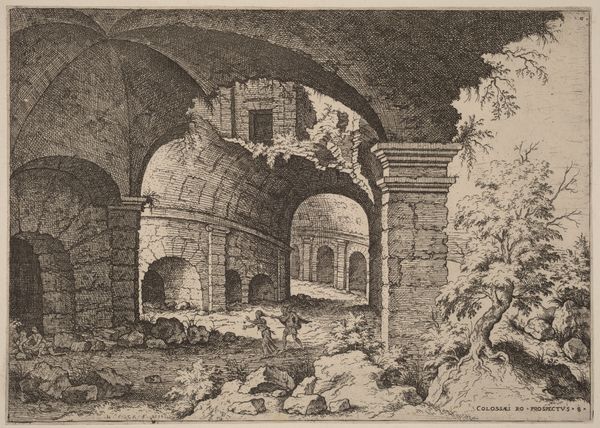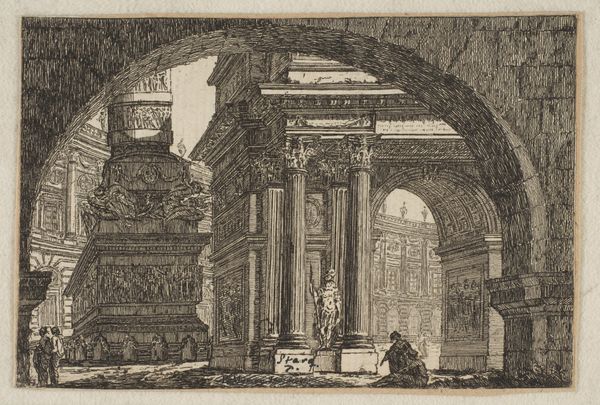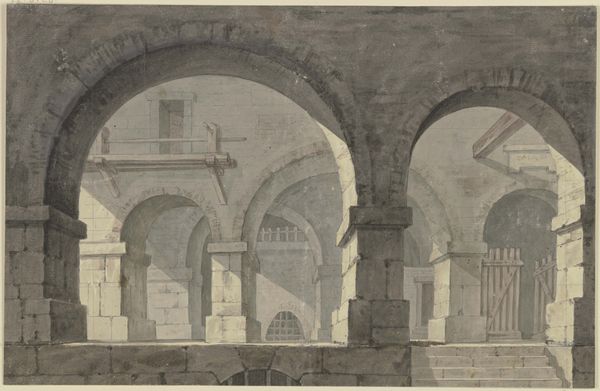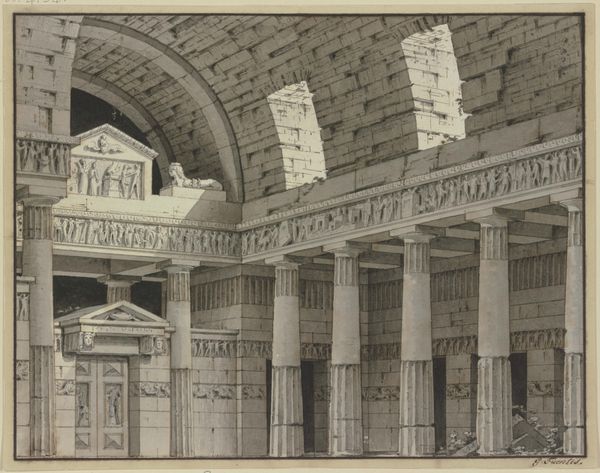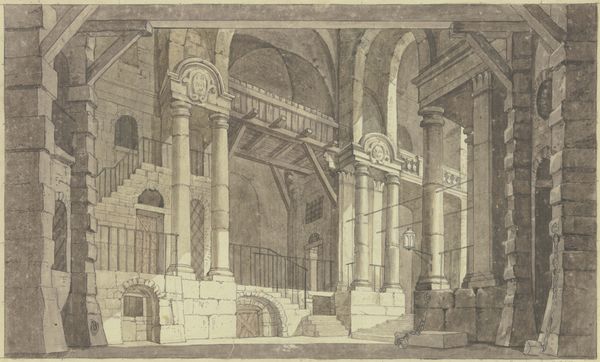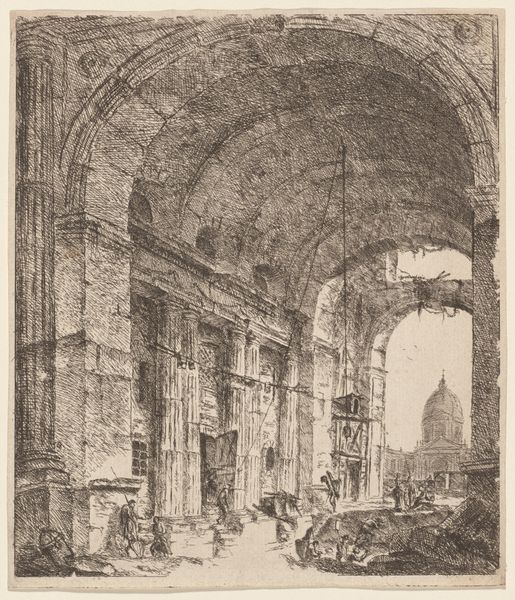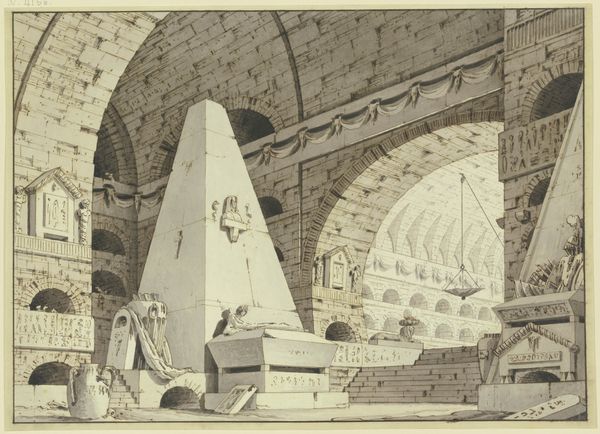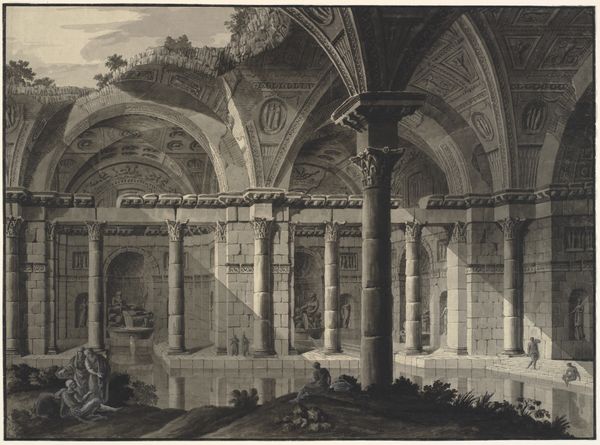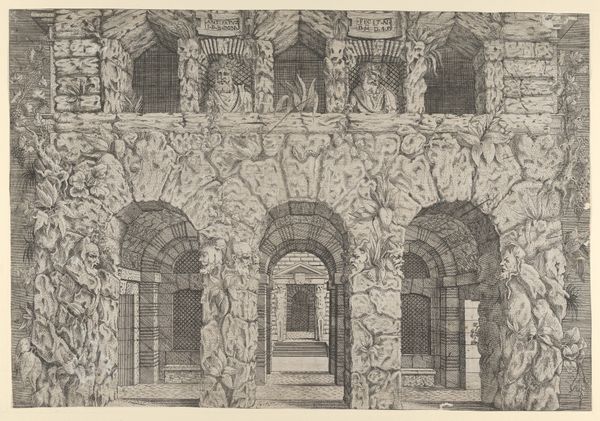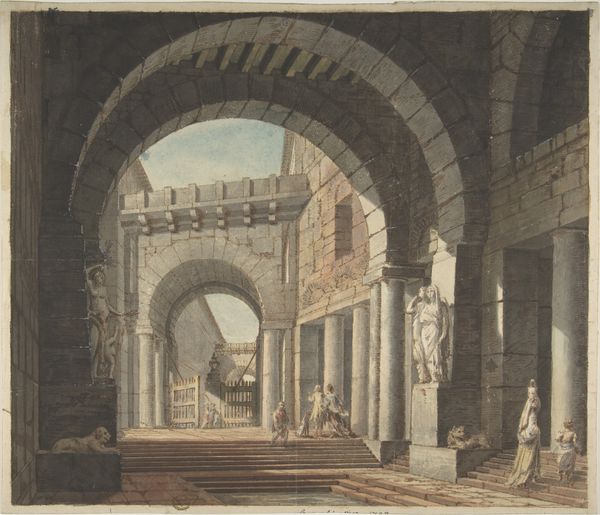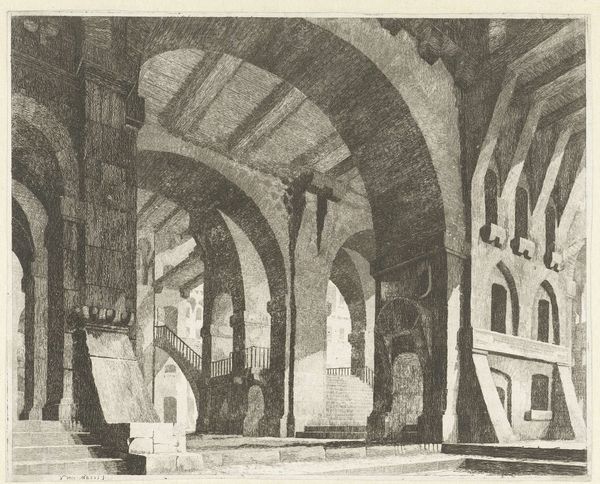
drawing, ink, architecture
#
drawing
#
landscape
#
ink
#
geometric
#
classicism
#
architecture
#
realism
Copyright: Public Domain
Editor: Here we have "Zerstörtes dorisches Gewölbe," a drawing made with ink, located at the Städel Museum. What strikes me most is the juxtaposition of grand classical architecture with its ruined state; it gives me a sort of melancholy feeling. How do you interpret this work? Curator: That sense of melancholy is palpable. I see this piece as speaking to the cyclical nature of power and civilization. Look at the deliberate depiction of decay – not just as a passive crumbling, but almost as an active dismantling. Editor: Active dismantling? In what way? Curator: Well, consider how ruins throughout history have been sites of resistance, both physically and symbolically. This drawing might be prompting us to question whose stories are typically enshrined in grand architecture, and whose are erased or actively demolished. It seems less an objective depiction of ruins, and more of a social critique of what is valued and what is disposable in a society. Editor: That's a really interesting point, I hadn’t considered the demolition aspect as a form of social commentary rather than simple neglect. I guess I saw it as purely aesthetic. Curator: Often, the aestheticization of ruins masks a deeper, more uncomfortable history. Are we romanticizing decline instead of confronting its causes and consequences? Editor: Thinking about the act of erasure built into this drawing has definitely expanded my understanding. It makes me think about which histories are preserved and which are conveniently forgotten. Curator: Exactly! By viewing ruins not just as remnants of the past but as active sites of cultural and political struggle, we can gain a richer understanding of both history and the present.
Comments
No comments
Be the first to comment and join the conversation on the ultimate creative platform.
